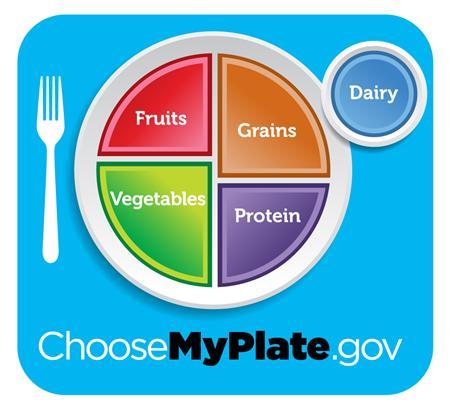by Monica Brinkley | May 13, 2015

With summer around the corner, it’s a great time to enroll your children in residential and/or day camps. For most communities there are a variety of camps offered. Camping experiences not only give children something to do, they are also great learning experiences.
Just as a garden or flowerbed requires critical elements like water, sunshine, space, and freedom from bugs to grow and to flourish, so do children. Similar to other living things, you need nourishing, supportive and protective environments where youth can grow to be healthy and contributing adults.
Each young person needs to:
Know they are cared about by others: Belonging
Feel and believe they are capable and successful: Mastery
Know they are able to influence people and events: Independence
Practice helping others: Generosity
Camps offer environments for growth, rich in the essential elements that support healthy development.
Very enthusiastic older youth and caring adults are the staff that lead the camps. Participating youth develop meaningful relationships with admired and trusted adults and older teens. New relationships begin as the campers share cabins and engage in camp activities. As a result of these experiences, the campers develop a sense of belonging as they realize that they are cared about by others.
During camp, youth develop many new skills. Camp teaches children to communicate, to work together as part of a team and to be a leader. Residential camps do this as the children learn to live in the same cabin and perform daily living chores. Leadership is developed by asking campers to fulfill responsibilities that may not be expected of them elsewhere. Additionally, sharing resources and attention helps foster teamwork and the desire to participate. Campers gain the sense of mastery as they become capable and successful at new skills.
There is a sense of adventure and challenge not usually found in daily home life. Most camps offer time for youth to test new ideas in a non-threatening environment. It pushes children out of their comfort zone and exposes them to new activities and experiences that they may not be familiar with. Many youth discover new hobbies or passions. By exploring various types of activities, children have a greater chance of finding something that they excel at or that makes them happy. Independence is gained as they are able to influence people and events.
Camp also provides many opportunities for youth to help fellow campers through daily chores of cleaning up cabins and dining hall, encouraging campers who may be homesick, cheering on their team, assisting camp staff, and so on. Our society needs for more people to gain the practice of helping others – that element of generosity.
Camp offers youth an opportunity to accept new responsibilities in leadership, conquer fears, practice new skills, and discover individual differences in an environment that reinforces the value of each person. These essential elements should be a focus of every camp. So as you seek camp opportunities for you children this summer, look for ones that feature these four essential elements. 4-H camping opportunities are available in every county in the state of Florida. Look them up and enroll your child today.

by Monica Brinkley | May 1, 2015
 With summer approaching, you might be asking, “What am I going to do with my children while they are out of school?” One solution is to get them involved in a club. 4-H is the youth organization of the Land Grant University System, of which the UF/ IFAS Extension Service is a part. 4-H and other clubs offer many benefits to youth who participate.
With summer approaching, you might be asking, “What am I going to do with my children while they are out of school?” One solution is to get them involved in a club. 4-H is the youth organization of the Land Grant University System, of which the UF/ IFAS Extension Service is a part. 4-H and other clubs offer many benefits to youth who participate.
For many children, they need to get out and do something. Research has pointed out many negative effects of spending too many hours in front of a television or on the computer. It is much healthier to be actively involved in activities, especially with other people.
I have said many times that idle time was detrimental to my children. Out of school time can be dangerous, as many children are exposed to drugs, alcohol, crime, and the list goes on. Clubs are a constructive way to spend their time.
Clubs offer a wonderful opportunity for children to meet new people and make new friends. Oftentimes, 4-H clubs are centered on a specific project or topic. Therefore, friendships or acquaintances are built around a common interest.
Life skill development is one of the greatest advantages of belonging to a 4-H club. Self-confidence grows as a result of obtained life skills. You can see from the chart below the four life skill areas and how the club leaders address the life skills through club involvement:
| 4-H Life Skill Area |
Targeted Life Skill(s) |
Suggested Activity |
| Head (thinking) |
Critical thinking, problem solving |
Use team-based activities with positive interdependence such as creating a group presentation on livestock disease |
| Head (managing) |
Goal setting, planning/organization, wise use of resources, keeping records, resiliency |
Assign individual roles such as leader, recorder, or materials manager to meet group goals |
| Heart (relating) |
Communications, cooperative, social skills, conflict resolution, accepting differences |
Provide youth with a means to assess group work skills and reflect on student performance independent from the other learning objectives |
| Heart (caring) |
Empathy, sharing, nurturing relationships |
Create long-term groups youth work within to share materials such as textbooks or tools |
| Hands (giving and working) |
Contribution to group, teamwork |
Successes and failures are shared by all members equally. Individual members can be randomly selected for assessment that will reflect on the knowledge/skills of the entire group. |
| Note: 4-H life skill areas and targeted life skills are from Norman and Jordan (2006), available at http://edis.ifas.ufl.edu/4h242. |
Many clubs have a great emphasis on teamwork. Members are encouraged to work toward a common goal. This can be done in a variety of ways including community service, group projects, or during camp, just to name a few. Youth develop independence as they gain these skills to carry throughout life.
Last, but not least, leadership and responsibility can be obtained with club involvement. Youth are allowed to make their own decisions, elect officers, and learn to lead, follow, and carry out their responsibilities.
What better way to learn these skills during their childhood in a safe environment than through club involvement in 4-H or other youth organizations? If your child is not involved in a club, use the summer to see what is offered in your community that will meet your family’s needs.
If you are interested in learning more about 4-H, go to florida4h.org.
by Kristin Jackson | Mar 17, 2015

Bindaas Madhavi. (2011) Listen to Your Kids.
Most parents would not allow their child to play in the street or to touch a hot stove because parents understand that these actions have consequences and the consequences are serious. If you don’t talk with your child about money and allow them to observe you exhibiting positive financial behaviors, this can also have serious consequences. One indicator of an individual’s financial capabilities is their credit score. A poor credit score can impact an individual’s ability to get a job, secure housing, purchase reliable transportation and access other forms of credit.
According to FINRA Investor Education Foundation State Financial Education Mandates, three years after Georgia, Idaho and Texas implemented a financial education mandate, credit scores of participants improved. In 2014, Florida also voted to adopt financial education into its social studies standards for students in grades K-12 and financial education is now a graduation requirement. While incorporating financial education into schools is an important step, parents still play an important role in financial socialization (establishing what is normal in terms of financial behaviors). In fact, research shows that time preference patterns and delay of gratification patterns are set by age five or before a child reaches kindergarten. Time preference patterns and delay of gratification patterns are often exhibited by adults through savings and budgeting. In a recent study by Cho, Gutter, Kim and Mauldin, the researchers found the effects of financial socialization had significant effect on the financial behaviors of low- to moderate-income adults aged 24-66, indicating that the time preference patterns children develop in youth could last a lifetime.
UF/IFAS Extension Northwest District Family & Consumer Sciences (FCS) Agents know that, as parents, you want to protect your child or children from things that have negative consequences whether it be an inattentive driver, a hot stove, or a poor credit score. One of the things parents can do immediately, to impact what their child is learning about money and how their child is being financially socialized, is to talk with their child about money. Some ideas to get your family conversations about money started are to discuss:
– Wants versus needs
– The grocery budget
– Household expenses
– How your child can earn/save money
If you are still a little nervous about starting the conversation as a result of concerns about your own financial capabilities, contact your local UF/IFAS Extension Office and ask about our Master Money Mentor Program or upcoming financial classes. If you can’t wait for a class, check out these additional resources:
Talking to Children about Money: http://www.ag.ndsu.edu/pubs/yf/famsci/fs1441.pdf
Are Your Children in the Middle of your Conflict or Divorce? http://goo.gl/lpXwwc
9 Important Communication Skills for Every Relationship http://edis.ifas.ufl.edu/pdffiles/FY/FY127700.pdf
Remember a family conversation about money is one conversation that is too important to wait. Make a money date with your child or children today!
References:
Cho, Gutter, Kim and Mauldin. (2012). The Effect of Socialization and Information Source on Financial Management Behaviors among Low-and Moderate-Income Adults. Family & Consumer Science Research Journal. 40(4): 417-430
Council for Economic Education. (2015). Survey of the States. Retrieved 16 March 2015 from http://www.councilforeconed.org/news-information/survey-of-the-states/
National Financial Educators Council. (2013) Financial Education Impact. Retrieved 16 March 2015 from http://www.financialeducatorscouncil.org/financial-literacy-statistics/

by Kristin Jackson | Mar 13, 2015

Bertholf. (N.D.) Juicing from http://goo.gl/Neu02U
Don’t fool yourself into thinking that drinking 100% fruit juice is the same as eating the whole fruit. Researchers from the Harvard School of Public Health found two key things that may have you re-thinking your breakfast drink:
- In many cases, fruit juice contains as much sugar as soft drinks, although the sugar in fruit juice is naturally occurring.
- Despite the calories in fruit juice, people who drink juice don’t feel as full as if they ate the fruit, so they end up consuming more calories.
When it comes to your children, over-consumption of fruit juice or consuming greater than 12 ounces a day was found to be associated with short stature and obesity. In 2006, 10% of all annual medical spending went to treating obesity-related diseases. When it comes to children specifically, research estimates the average total health care expenditures for a child treated for obesity is nearly three times higher than the average health care cost for all other children.
At this point, you probably are asking, “If juice is out, then what should I do?” UF/IFAS Extension has a solution for you. Try remixing your current plate. Instead of going for the orange juice, grab an orange. Substitute your fruit juice for its whole fruit counterparts. If you decide to make the swap, you will find yourself in need of a drink; try water or milk. For more resources on building a healthy plate, visit:
ChooseMyPlate.gov
Healthy Eating: Smart Snacking
Choose MyPlate: Drink Water Instead of Sugary Drinks
References:
Dennison, B., Rockwell, H. and Baker, S. Excess fruit juice consumption by preschool-aged children is associated with short stature and obesity. Pediatrics 100(4):733, 1997
Department of Nutrition at Harvard School of Public Health. Fact Sheet: Sugary Drink Supersizing and the Obesity Epidemic. Nutrition Source, 2012
Finkelstein EA, Trogdon JG, Cohen JW, Dietz W. Annual Medical Spending Attributable to Obesity: Payer- and Service-specific Estimates. Health Affairs, 28(5): w822-831, 2009.
Marder W and Chang S. Childhood Obesity: Costs, Treatment Patterns, Disparities in Care, and Prevalent Medical Conditions. Thomson Medstat Research Brief, 2006
by Ginny Hinton | Jan 30, 2015

There’s a new law in Florida – and although it’s far from comprehensive, it’s designed to better protect our kids. As of January 1, 2015, Florida law requires that all children riding in vehicles must use a safety seat until their 6th birthday. This means that kids who are 4- or 5-years-old and were previously restrained using just a seat belt must now ride in a car seat or booster seat.
Although much of the publicity about the new law also has reinforced the guideline that children under age 13 are much safer in the back seat, the law itself applies only to children who are not yet six. The law is not a “booster seat” law, because children under age 6 are still safer in a 5-point harness. Once your child is at least 4-years-old, weighs at least 40 pounds, and can sit in position for an entire car trip, you may make the decision to move that child to a booster seat. The fact remains, however, that the child is still much safer in a 5-point harness until he/she reaches the upper height or weight limit of that seat (typically 40-65 pounds). Even though your child may beg to differ, keeping him/her in a harnessed seat longer is one of the best gifts you can offer as a parent!
Want to make sure you’re using the best type of restraint for your child? You can find a nationally certified child passenger safety technician near you at http://cert.safekids.org. Click on “Find a Tech” and search by location.
by Shelley Swenson | Jan 30, 2015

School Lunchtime
(SNAP Education Photo Gallery)
Do you have a child or grandchild who eats meals at school? Do they come home hungry and complain about the meals they are served? Have you taken any time to explain how the lunchroom food choices are made? If not, it may be time to have that conversation.
The 2012 school year brought major changes to the meals children eat at school. The new standards are major components of the Healthy, Hunger-Free Kids Act of 2010 and they were the first major changes to school nutrition in 15 years. You know the statistics….one-third of America’s school-age children are overweight or obese and at higher risk for diabetes, high blood pressure, depression, poor academic performance, and behavioral problems before they reach adulthood. These risks increase for low-income children who do not participate in federally-funded nutrition programs because they have to rely on their family’s limited resources. All of these conditions reflect in the food choices youth are making. The new school lunch meal standards may be the first step in reducing these statistics.
Take some time to remind your children or grandchildren there is a reason they are fed what they are offered in the cafeteria and the staff serves items that are nutritionally balanced and, if eaten, should provide for growth and a sharp attitude in the classroom.
Here are some key points to share. School meals are:
- High in nutrients and adequate in calories
- An appropriate balance between food groups
- Based on the latest nutritional science
- Intended to provide one-fourth of students’ daily calorie needs for breakfast and 1/3 for lunch
- Reflective of the different nutritional requirements for each age
- More nutritious foods because they consist of fruits, vegetables, and whole grains and fewer foods containing sodium and fat
- Providing fat-free milk (unflavored or flavored), 1% low-fat milk (unflavored), or a milk alternative. When did children decide that milk had to be flavored to be tasty? We need to turn this idea around; there is a great deal of sugar in flavored milk!
- Offering students options to eliminate waste
The best way to lessen waste is to not have any of the food thrown away. UF/IFAS programs in many schools (Family Nutrition Program (FNP) and Expanded Food and Nutrition Education Program (EFNEP)) offer food samples of unfamiliar foods and discussions of their value to increase student acceptance. This also is a parent’s job. Look over the school lunch menu, discuss it with your children, encourage them to try everything served, and request second servings if they remain hungry. Offer taste tests at home. Improving the way students view the food being served can make a big difference.
Are you familiar with MyPlate? Your children might be. Review it with them and contact your county Extension office if you need clarification on any aspect of it.

Encourage your children’s nutritional health. Remember, the goal of the changes in the school cafeteria is to improve children’s health; when followed correctly, the new meal standards make school meals healthier with the potential to improve children’s health. As a parent, you share in the responsibility to make this happen. Thanks for assisting us in ensuring the positive nutritional status of our children!!









